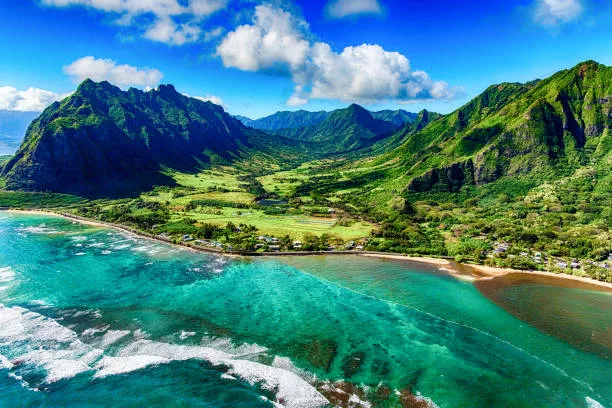Collaborating Across Islands for a Sustainable Future: The beautiful island of Molokai in Hawaii didn’t just spark the interest of tourists in 2023, but also that of Bri Gabel, a sustainability coordinator from Sitka, Alaska. Their shared inclusion in the third cohort of the Energy Transitions Initiative Partnership Project (ETIPP) presented a unique opportunity for learning and potential collaboration between the two remote regions.
Having studied in Hawaii, Gabel recognized parallels between her home state and the tropical islands — from logistical challenges to high costs due to isolated geographies. Both places are determined to create a self-sufficient and sustainable energy future.
ETIPP: A Conduit for Local Wisdom and Technical Expertise
The ETIPP stands at the intersection of advanced research from national labs and invaluable local insights, serving island and remote communities to strengthen their energy resilience. Among its many functions, ETIPP encourages an exchange of ideas and best practices between participants, aiding communities like Sitka and Molokai to identify and achieve their unique renewable energy objectives.
Despite their differing targets, both communities share a fundamental belief: the path to sustainable energy hinges on the active involvement of its people.
Molokai embarked on its ETIPP journey fortified with a Community Energy Resilience Action Plan (CERAP), a roadmap of energy projects with deep-rooted community consensus. Conversely, Sitka is embarking on round two of ETIPP assistance, setting sights on mapping renewable options to match forecasted energy needs.
Emulating Molokai’s engagement successes stands as a beacon for Sitka, avoiding the reinvention of the wheel and instead building on tried and tested community practices.
Emphasizing Community Engagement at Every Step
When Sitka first aligned with ETIPP in 2021, the focus was on exploring renewable possibilities and gearing up for the energy demands of the future; their current project entails an analysis to find a renewable match for this anticipated demand.
Molokai, meanwhile, progresses on its established CERAP path, working on modeling solar energy viability, powering essential services with renewables, and examining the prospects of pumped hydropower for energy storage.
Gabel’s team, inspired by Molokai’s tactful combination of education and community engagement, invited Leilani Chow from Sustainable Molokai to share insights with Sitka’s Accountability Commission. The approach was simple yet innovative – integrating discussions about energy into everyday community gatherings and using popular communication platforms to reach every individual.
For Molokai, inclusive dialogues have been paramount, ensuring that every islander, from first responders to homestead associations, has their say and impacts the collective energy journey.
Chow emphasized that while the engagement methods are extensively resource-intensive, the return on investment is tangible – communities don’t just receive energy solutions, they become co-creators of a more robust and interconnected societal fabric. ETIPP’s flexibility and respect for local processes have been key in nurturing this community-led model.
Paving the Way for Shared Energy Knowledge and Progress
The energy transition conversation is gaining traction within Sitka’s community as well. ETIPP experts are immersing themselves within the local environment to tailor project outcomes to Sitka’s energy visions meticulously.
Gabel appreciates ETIPP’s dual focus on technical expertise and community engagement, which enforces a culture where experts not only share knowledge but actively listen and adapt to community feedback. This approach paves the way for a cohesive project scope that genuinely resonates with the residents’ needs and aspirations.
Armed with insights from December 2023’s interactive community session, Sitka is refining its project details, setting the stage for the next phase of technical assistance.
As mutual progress continues, Gabel is eager to reciprocate the guidance Molokai generously offered, potentially forming a knowledge-sharing feedback loop that benefits both communities and serves as a model for others embarking on their own energy transition journeys.
